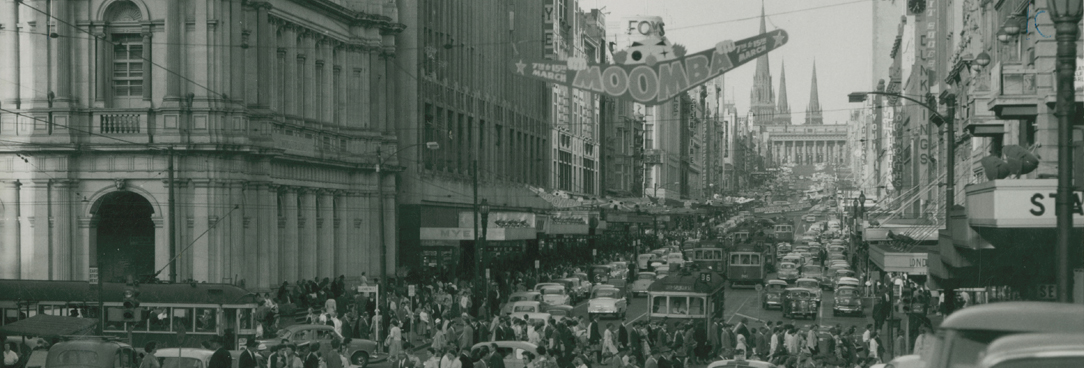
Author: Tara Oldfield
Senior Communications Advisor
This blog post was updated 10 August 2021.
Australia's largest free community festival returns in March. In anticipation for the magical Moomba Parade we thought we'd dive into our newly digitised Melbourne Harbour Trust collection of photographs and revisit Moomba of 1966 and '67.
The Moomba Parade
The Moomba Parade is traditionally held on the final day of the Moomba carnival which falls on the Labour Day public holiday. The Parade has run down Swanston Street since 1955, featuring floats, marching bands and even animals. Moomba 1966 and 1967 photos from our Melbourne Harbour Trust collection have recently been digitised. The photos show that the usually unpredictable Melbourne weather gods smiled on Melbourne both years with large crowds turning out to celebrate in the sunshine.
Moomba 1966
Men on bikes with five wheels cycled through tambourine players, weaved past performers on stilts and past floats for organisations like Lions International. Newspapers reported that demonstrators opposed to Australia's involvement in Vietnam temporarily interrupted the procession, though the Melbourne Harbour Trust photographer didn't capture those protests in these images.
As was tradition since Beverley Stewart's crowning in 1955, a Moomba Queen was chosen for the festivities. That year 19-year-old model Erica McMillan from Oakleigh was Moomba Queen 1966 winning the crown over eight other finalists. Sadly Erica died in a car accident only two months later. She was a passenger in the car she won as Moomba Queen.
Moomba 1967
A crowd of 800,000 graced the City of Melbourne for Moomba 1967 to see the two and a half hour procession and 57 floats parade down Swanston. Melbourne buildings were decorated in streamers as colourful as the floats. The Queen in 1967 was Patsy Earp of Ivanhoe, and for the very first time a Moomba King was appointed - British actor Robert Morley.
The behaviour, and perhaps quality of the floats, of university students drew some controversy in the papers with the Director of Moomba, Don Ingersole, banning them from future Moomba carnivals:
"I make an exception with Melbourne University students because their entry on Monday was well done and a credit to them... But students from Monash and Footscray Technical and other colleges put on shows that left much to be desired. Many students behaved in poor taste. It was shocking that a roll of lavatory paper was thrown at the Lady Mayoress." Don Ingersole, Canberra Times, 15 March 1967.
Following the procession, The Seekers played to a packed crowd of 200,000 at the Sidney Myer Music Bowl.
Melbourne Harbour Trust photographs
The Melbourne Harbour Trust photographic collection can be found here.
More Moomba archival photographs
Other Moomba photos can be found in our:
- State Bank collection featuring the Mickey Mouse Club in the 1950s
- Gas and Fuel Corporation collection of photographs
Material in the Public Record Office Victoria archival collection contains words and descriptions that reflect attitudes and government policies at different times which may be insensitive and upsetting
Aboriginal and Torres Strait Islander Peoples should be aware the collection and website may contain images, voices and names of deceased persons.
PROV provides advice to researchers wishing to access, publish or re-use records about Aboriginal Peoples








